Sleep is critical to athletic development, yet so many of us neglect this most primal, instinctively driven period of recovery.
Firstly, as you will soon discover, the blue light emitted from a phone or tablet screen can disrupt sleep, so if you’ve just found this article and you’re about to go to sleep, perhaps save it as a bookmark and come back to it another time?
Introduction
As individuals committed to physical performance, our objective is to maximise the benefits of training. In a drive to achieve success, many of us pay significant attention to the quality of training but will often overlook time dedicated to recovery. Ironically, it’s in the recovery stages (compensation phase in the graph below) post exercise where most of the training adaptations occur. The training itself simply acts as the stimulus for adaptation. You can learn more about this in our training periodisation article series of articles.
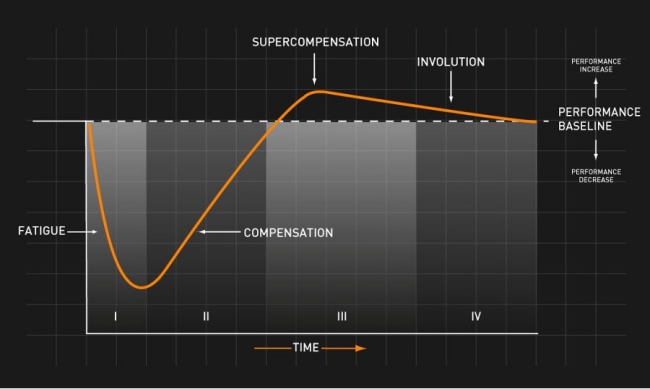
Unless you are lucky enough to form part of the 1% who are paid to train for competition, most of us must battle with the limited time constraints of life’s responsibilities, such as work and family, before we can engage in our training sessions. For many reading this it won’t be too hard to remember when you last said “there just isn’t enough hours in the day” and as a result, you neglect sleep to gain more waking hours and cram in jobs from your ever developing to-do list.
Staying up later may allow you to tick off jobs from your to do list, but it should not be considered a long-term solution. You should never stay up late for something you wouldn’t get up early for. If you find yourself aimlessly browsing social media before bed, ask yourself, would I get up early to do this? If not, put your device down and focus on getting some valuable sleep. Neglecting sleep can have multiple negative health and performance implications, which we will learn about in the coming sections. But first, let’s understand the stages of sleep in a little more detail.
What is sleep?
When we fall asleep, whilst it may feel like we move into a single stage of unconsciousness and wake up many hours later, the cycle of sleep is more complex. We cycle through 4 sleep stages with a complete cycle lasting roughly 90 to 110 minutes.
Stage 1 – NREM – Non Rapid Eye Movement (N1): This is the transitional stage between wakefulness and sleep. Throughout this stage, brain waves begin to slow and you may experience yourself drifting in and out of consciousness. It’s likely during this stage you may feel like you have not yet slept, but a sleeping partner would tell you otherwise. Muscle activity decreases, but you may experience sudden muscle contractions known as hypnic jerks which can sometimes wake you up. This stage typically only last for a few minutes.
Stage 2 – NREM – Non Rapid Eye Movement (N2): This is a deeper stage of NREM sleep and throughout this stage brain waves continue to slow. Your core body temperature begins to drop, and heart rate slows down to a “true” resting value, a resting value that you are unlikely to see during waking hours. Stage 2 sleep comprises a significant portion of the total sleep duration, which is why it is sometimes referred to as “core” sleep. This stage is important for memory consolidation and restoration.
Stage 3 – NREM – Non Rapid Eye Movement (N3): Also known as slow-wave sleep, or more commonly recognised as deep sleep, this is the most difficult stage to be awoken from. During this stage, various restorative processes such as tissue repair, growth and immunity (which you can learn more about here) are developed. Slow-wave sleep is particularly important for physical restoration and is strongly associated with feeling refreshed when you wake up.
Stage 4 – REM – Rapid Eye Movement Sleep: REM sleep is characterised by “rapid eye movement”. During this phase the brain’s activity resembles wakefulness and it’s within this stage that we experience dreams. Due to the rapid activity of the brain during REM sleep, the body enters a state of temporary paralysis to prevent us from acting out our dreams. REM sleep plays a crucial role in emotional processing, and cognitive learning.
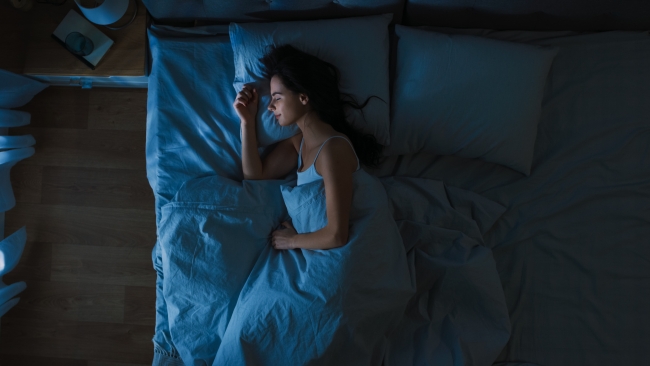
What disturbs sleep?
As we know from experience, our ability to get a good night’s kip can vary from night to night. From what we’ve learnt previously, the more time spent in slow-wave sleep the more likely we are to wake up feeling recovered, fresh and alert. To try and increase the amount of time in slow wave sleep, we need to identify possible factors that could disrupt sleep and allow us to create better sleeping habits and routines. It’s these sleep habits and routines that are often referred to as “sleep hygiene.”
Screentime in the lead up to sleep: Whether it’s analysing our post session data, browsing social media, or buying your next bit of kit, the phones, tablets and laptops that we use emit blue light from the screens. Blue light is just one of the colours that makes up the visible light spectrum and just so happens to be one of the most powerful. So powerful in fact that it can reduce the production of melatonin, the hormone largely responsible for the body’s sleep-wake cycle. As natural light reduces, melatonin secretion increases and this relaxes the body in preparation for sleep. Therefore, you should aim to reduce screen time at least 90 minutes before sleep whilst also reducing ambient lighting within the same timeframe.
Caffeine: If you choose to supplement a high intensity training session with caffeine to enhance your performance, it would be considered wise to complete this session earlier in the day giving the ingested caffeine enough time to metabolise before you prepare to sleep. Alternatively, you could structure more demanding training sessions after rest days, when you are more fresh and less reliant on caffeine to achieve the desired session outcomes.
Exercise time: Whilst the time of day you choose to complete your exercise may not impact everyone, it is certainly recognised as a potential factor that could disrupt sleep. People who typically train in the morning or early afternoon may be more susceptible to sleep disturbances if training session times are rescheduled to later in the afternoon or early evening. Exercise completed in the pre-sleep window (around 90-minutes before attempting to sleep) has also been shown to be detrimental. Research has shown that the release of melatonin is reduced after exercise, which can have an impact on sleep latency (the time taken to fall asleep). Exercise also induces effects which are somewhat polarising to the state of the body in the run up to sleep. For example, core body temperature, heart rate and psychological arousal all increase during exercise compared to sleep preparation where these same factors should start to reduce.
Management of stress and anxiety: It will be a familiar experience for many. You have had a particularly stressful day which has resulted in a large release of cortisol (the human stress hormone) and as a result we develop the feelings of anxiety which impacts sleep. Unfortunately, whilst stress and anxiety can impact sleep, poor sleep may also heighten symptoms of stress and anxiety, so we find ourselves in a vicious circle. Implementing and acknowledging some of the factors discussed above may help to promote better sleep and allow you to manage the symptoms of stress and anxiety more effectively. This should help to “reset” the hormonal imbalance upon waking and relieve symptoms of stress and anxiety. Implementing periods of mindfulness, breathing techniques, journaling, yoga, or self-meditation are other fantastic ways to help alleviate the symptoms of stress and anxiety as the brain becomes less emotionally driven, and more rationally aware. Finally, let’s not forget that the act of exercise itself has been shown to suppress feelings of stress and anxiety, so structuring regular exercise could significantly support your mood, regulation of anxiety and mental wellbeing therefore, improving sleep quality.
Lack of attention to sleep: Whilst many rightly obsess about the quality of their training and nutrition, the importance of recovery and specifically sleep is often neglected simply through habitual routine or naivety. Yet sleep acts as a direct modulator for muscle growth, efficient metabolism, positive mood and emotional regulation along with precise decision-making and many other cognitive processes. Importantly, all of these factors will impact your training quality and therefore, could simply paying more attention to better sleep be the magic bullet you’ve been looking for to elevate your performance?
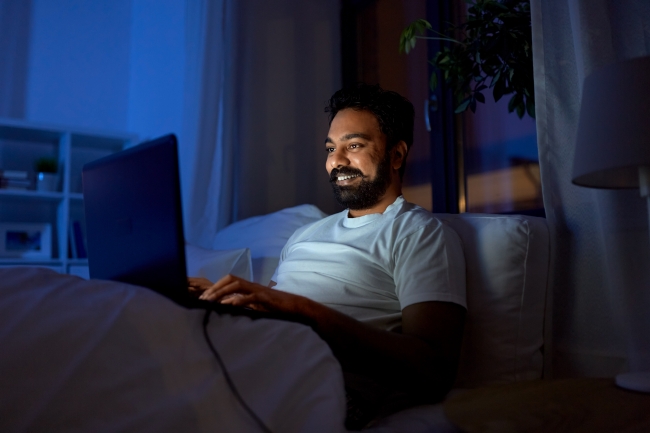
How Much Sleep Do We Need?
Accurately determining how much sleep a person needs is difficult as everyone’s sleep needs are different. In addition, the ability to manage the symptoms associated with poor sleep also differs from person to person. For example, you may have a friend who can function without any loss of concentration or motivation on as little as six hours of sleep per night, yet you may need closer to eight.
Whilst there are interindividual differences, the US National Sleep Foundation has identified that young adults (18-25 years) require between 7-9 hours, whilst adults (26-64 years) require between 7-8 hours respectively. Whilst it may be a long-established joke that teenagers and young adults don’t arise from their slumber until late morning or in some cases early afternoon, research from the National Institute of Mental Health has recognised that the brain (especially the prefrontal cortex, the part behind our forehead) doesn’t stop developing until our mid – late 20’s. It’s this energy-demanding brain development that further increases the need for sleep.
But what about the physically active amongst us? In a research paper entitled “How Much Sleep Does an Elite Athlete Need” the average amount of sleep required to feel refreshed was 8.3 hours, yet only 3% of the 175 different athletes sampled found they were achieving this. Also a huge 71% of the sampled athletes fell short of their sleep need by 1 hour or more.
Given the extra physical load that the physically active amongst us place upon our bodies, it’s hardly surprising that the sleep need for those who regularly exercise is increased beyond the general adult population (7-8 hours) to maximise recovery and adaptation from training.
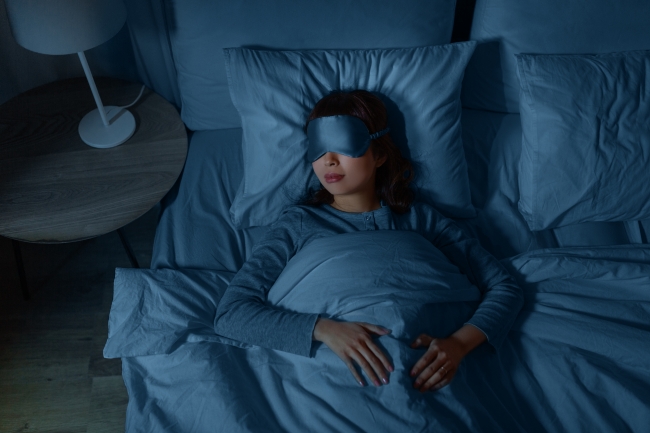
How Sleep Impacts Muscle Recovery
One of the most important hormones responsible for physical adaptation is a hormone called human growth hormone (rather appropriately named). This powerful hormone is responsible for general physical restoration with an emphasis on muscle growth, repair and structural (bone) development. 95% of human growth hormone is released into the body during the Stage 3 NREM phase (deep sleep).
Other hormones responsible for muscle repair and growth such as cortisol and testosterone also closely follow the body’s natural sleep-wake cycle. For instance, cortisol secretion is lowest between 2am and 4am whereas testosterone secretion is highest between the hours of 5am and 8am.
Factors that disrupt sleep such as those listed in the previous section will likely lead to elevated cortisol levels during the night. This increase in cortisol may interfere with the amount of time spent in deep sleep, as the brain remains in a more alert state. The result being a greater number of times woken, and less time spent in the important sleep stages such as slow-wave sleep (NREM N3), blunting the release of human growth hormone. It has also been established that insufficient sleep can result in lower testosterone levels. With testosterone being a steroid hormone responsible for muscle growth, it’s important that the relationship between quality sleep and muscle recovery is acknowledged for those who wish to take their recovery seriously.
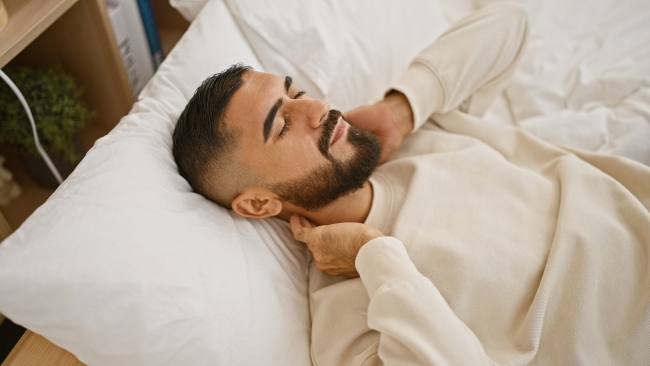
Impact of Reduced Sleep on Sports Performance
Inadequate sleep, both in terms of quality and quantity, results in numerous adverse effects on sports performance. Nearly every sport requires a synergy between mental and physical performance and the contribution of each will be different between sports.
From a psychological perspective, sleep deprivation slows reaction times and blunts clear thinking. Those experiencing sleep deprivation also tend to engage in a greater level of risk whilst also showing lower degrees of risk calculation. It’s within these scenarios where sports performance could be negatively impacted and could even result in long term injury. For example, a trail runner may choose to follow a trail which would typically be above their technical ability to save a few valuable seconds. The sleep-deprived brain values the shorter distance covered more than the longer-term reward of injury prevention and as a result the runner begins to navigate the technical trail path. Where this becomes problematic is that whilst the brain’s decision-making capacity has become obviously compromised, so have other important skills associated with optimal trail running form such as co-ordination, balance, reaction time and accuracy. So navigating the same path now becomes even more technically demanding.
Additionally, insufficient sleep heightens irritability and the susceptibility of developing anxiety and low self-esteem which will have negative implications on sports performance, especially if multi-day performance is required, such as during a stage race or tournament.
The table below shows how various sleep interventions affects the psycho-physiological performance of different sports.
| Sports Discipline | Number of Participants | Sleep Intervention | Performance Outcome |
|---|---|---|---|
| Handball Goalkeepers | 12 | Disturbed Sleep with Total Duration of 4 – 5 Hours | Reaction Time Decreased |
| Basketball Players | 11 | Sleep Duration Extended by 2 Hours | Reaction Time Increased |
| Tennis Players | 16 | Delayed Bedtime by 2 – 2.5 Hours | Tennis Serve Accuracy Decreased |
| Darts Players | 60 | Delayed Bedtime by 4 Hours | Dart Throwing Accuracy Decreased |
Data adapted from O’Donnell et al., (2018)
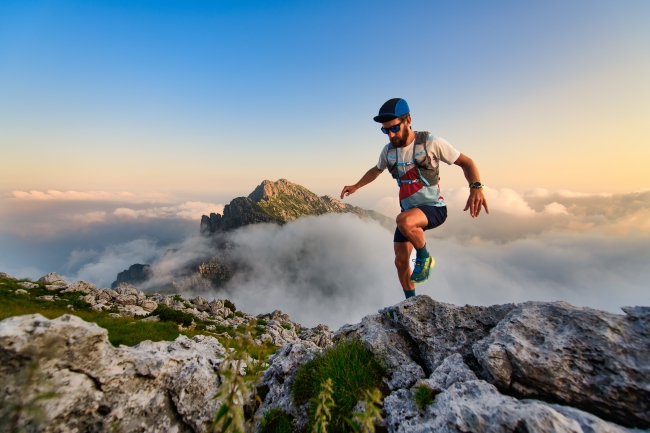
Power Naps!
A nap may once has been considered lazy by many, but since the rise in research surrounding sleep and its impact on productivity, positive mental health, physical health, physical performance, and psychological articulation, the idea of the afternoon nap is slowly being redefined as a highly valuable tool. Various bouts of research have identified that a nap can improve sports performance in a number a different ways, ranging from improved sprint performance to increased muscle force production, even to increased rating of player performances from coaches in professional competition. All from as little as 20 minutes of dedicated mental recovery.
How Long Should a Nap Be? Research has identified two ideal nap durations with the ideal duration being dependant on your available time. The two durations are positioned to prevent you from waking up during the slow-wave (deep sleep) phase. Waking up during slow-wave sleep is difficult and can result in something known as sleep inertia. This is the “groggy” feeling you may experience after waking up which can leave you feeling unproductive and drowsy, which of course completely defeats the objective of the nap.
Less Than 20 Minutes: A nap lasting less than 20 minutes is enough to enter stage 2 sleep where the body begins to actively rest by reducing the heart rate and brain activity allowing for memory consolidation and restoration. This brief but short mental rest is enough to boost productivity after awakening, without sleep inertia becoming a problem. To further avoid the risk of grogginess upon waking, a well-timed caffeine trick can be implemented.
What’s the Trick?: If you have read our article dedicated to caffeine, you will know that the time taken for caffeine to peak within the blood is around 40 minutes. Therefore, you can strategically consume a coffee or ingest another form of caffeine just before your nap, rest for 20 minutes, and just as you rise to carry on with your day, the stimulation of the caffeine will kick in and further support your alertness upon waking as it begins to reach its peak over the next 10 to 20 minutes.
Close to 90 Minutes: Alternatively, the second option is a significantly longer nap, lasting close to 1.5 hours. The reason for this significantly increased duration is to allow you to pass entirely through one complete sleep cycle incorporating all of the sleep stages. This nap duration may be best if you have completed a very challenging training session. Interestingly, work from Davies and colleagues (2010) explored the best time to take a long 90 minute nap after completing a morning endurance training session. They found that a 90 minute nap taken 2 hours after exercise was significantly more effective than the 90 minute nap taken just 1 hour after exercise, resulting in nearly double the amount of time spent in slow-wave sleep (the phase associated with physical recovery due to the release of human growth hormone and testosterone).
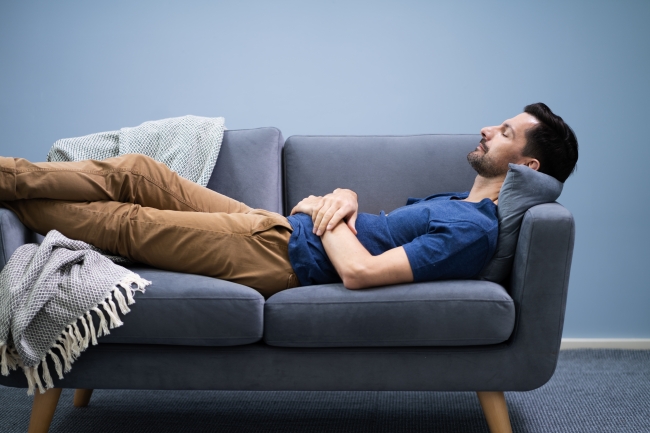
Putting it to bed
The relationship between sleep, sports performance and athletic recovery cannot be overstated. As you strive to optimise your training and race or match day performance, it’s important that quality sleep is recognised as an indispensable component of the training process. From enhancing physical recovery and cognitive function to optimising skill acquisition and decision-making abilities, adequate sleep serves as a potent catalyst for physical development. Simply by acknowledging the profound impact of sleep, you can prioritise good sleep hygiene practices to unlock the full potential of the training you complete each day.
If you have any questions about this article or any other subject, please don’t hesitate in contacting us at enquiries@torqfitness.co.uk or phone 0344 332 0852.
References
Miller, D.J., Sargent, C., Roach, G.D., Scanlan, A.T., Vincent, G.E. and Lastella, M., 2020. Moderate-intensity exercise performed in the evening does not impair sleep in healthy males. European journal of sport science, 20(1), pp.80-89.
Hirotsu, C., Tufik, S. and Andersen, M.L., 2015. Interactions between sleep, stress, and metabolism: From physiological to pathological conditions. Sleep Science, 8(3), pp.143-152.
O’Donnell, S., Beaven, C.M. and Driller, M.W., 2018. From pillow to podium: a review on understanding sleep for elite athletes. Nature and science of sleep, pp.243-253.
Milewski, M.D., Skaggs, D.L., Bishop, G.A., Pace, J.L., Ibrahim, D.A., Wren, T.A. and Barzdukas, A., 2014. Chronic lack of sleep is associated with increased sports injuries in adolescent athletes. Journal of Pediatric Orthopaedics, 34(2), pp.129-133.
Leproult, R. and Van Cauter, E., 2011. Effect of 1 week of sleep restriction on testosterone levels in young healthy men. Jama, 305(21), pp.2173-2174.
Skein, M., Duffield, R., Edge, J., Short, M.J. and Mündel, T., 2011. Intermittent-sprint performance and muscle glycogen after 30 h of sleep deprivation. Medicine & Science in Sports & Exercise, 43(7), pp.1301-1311.
Mohd Azmi, N.A.S., Juliana, N., Azmani, S., Mohd Effendy, N., Abu, I.F., Mohd Fahmi Teng, N.I. and Das, S., 2021. Cortisol on circadian rhythm and its effect on cardiovascular system. International journal of environmental research and public health, 18(2), p.676.
Patel, A.K., Reddy, V., Shumway, K.R. and Araujo, J.F., 2022. Physiology, sleep stages. In StatPearls [Internet]. StatPearls Publishing.
Waterhouse, J., Atkinson, G., Edwards, B. and Reilly, T., 2007. The role of a short post-lunch nap in improving cognitive, motor, and sprint performance in participants with partial sleep deprivation. Journal of sports sciences, 25(14), pp.1557-1566.
O’Donnell, S., Beaven, C.M. and Driller, M., 2018. The influence of match-day napping in elite female netball athletes. International journal of sports physiology and performance, 13(9), pp.1143-1148.
Davies, D.J., Graham, K.S. and Chow, C.M., 2010. The effect of prior endurance training on nap sleep patterns. International Journal of Sports Physiology & Performance, 5(1).
Sargent, C., Lastella, M., Halson, S.L. and Roach, G.D., 2021. How much sleep does an elite athlete need?. International journal of sports physiology and performance, 16(12), pp.1746-1757.






